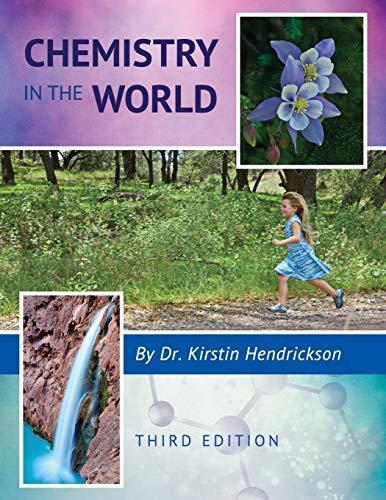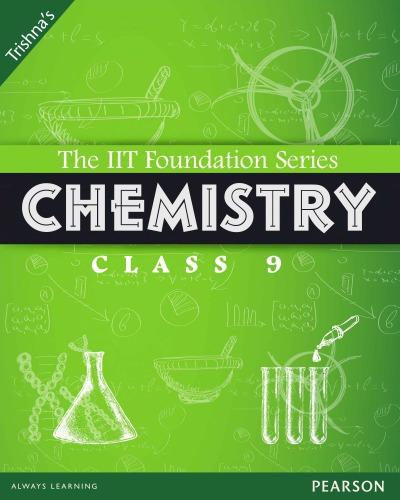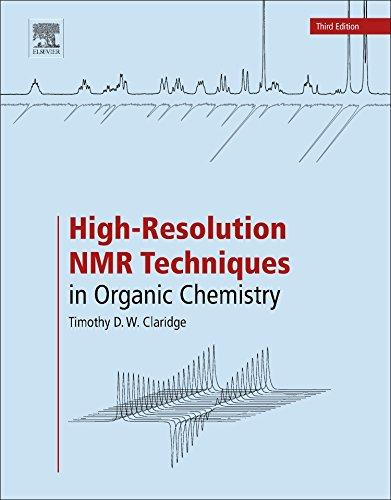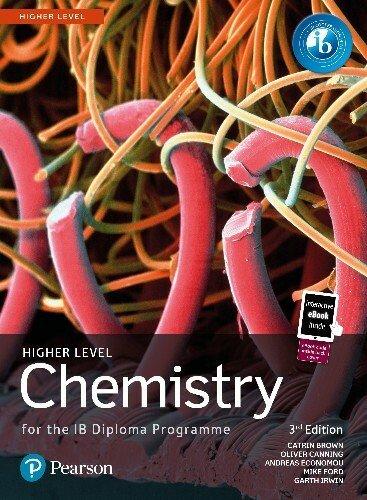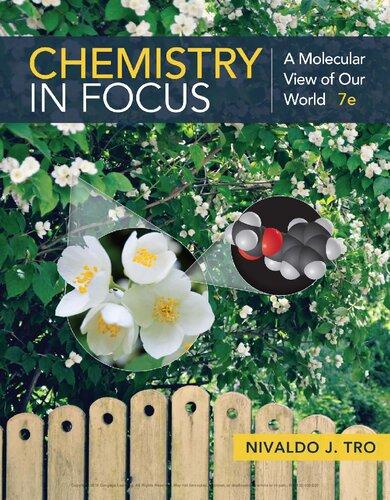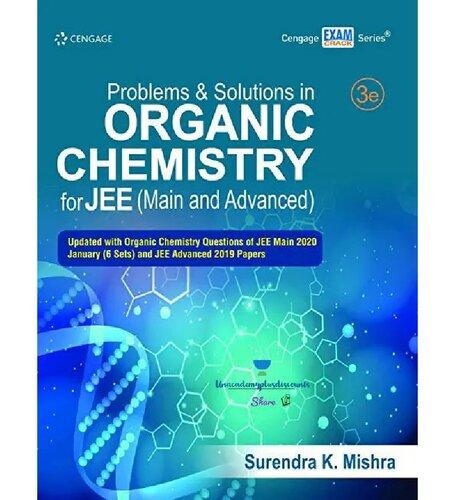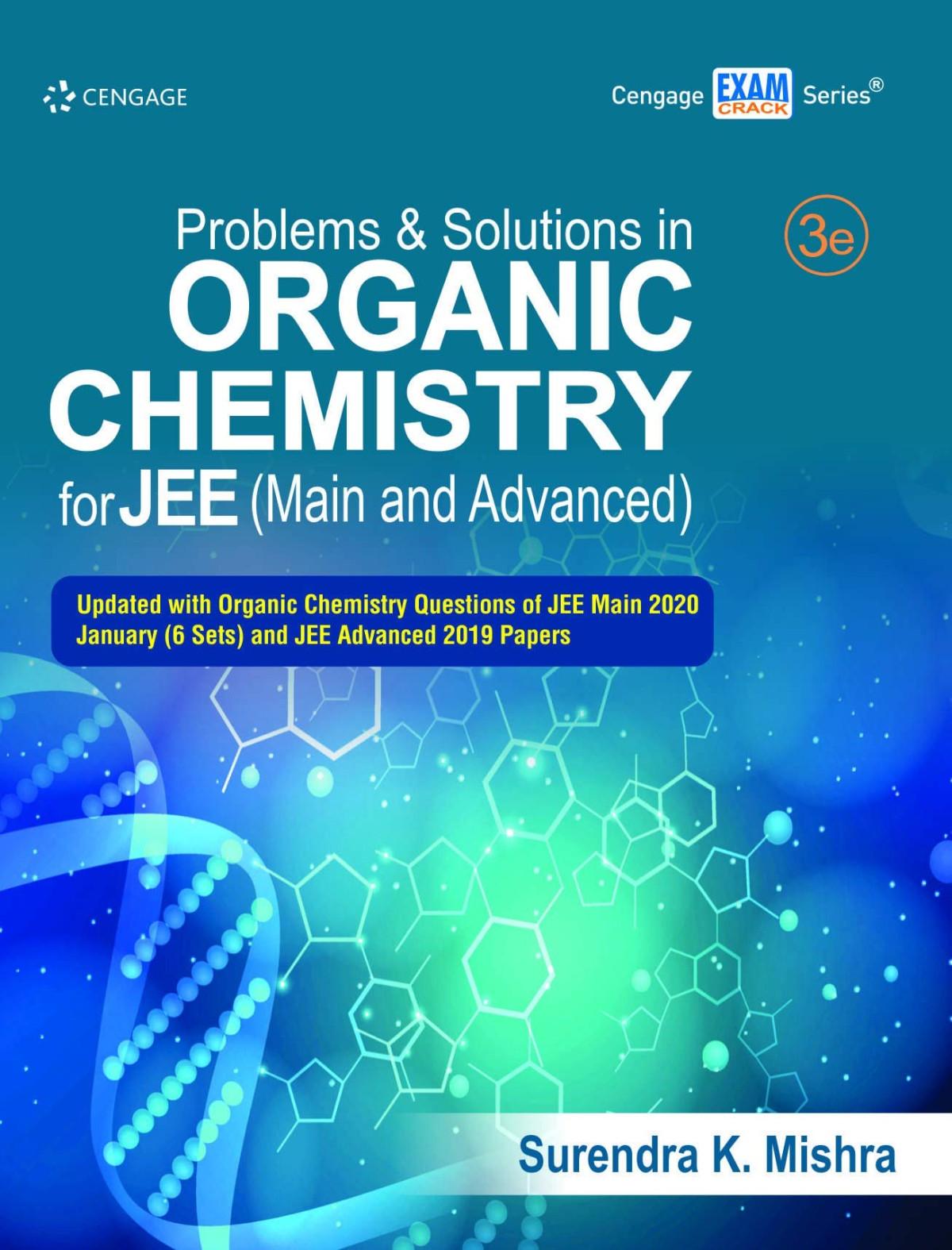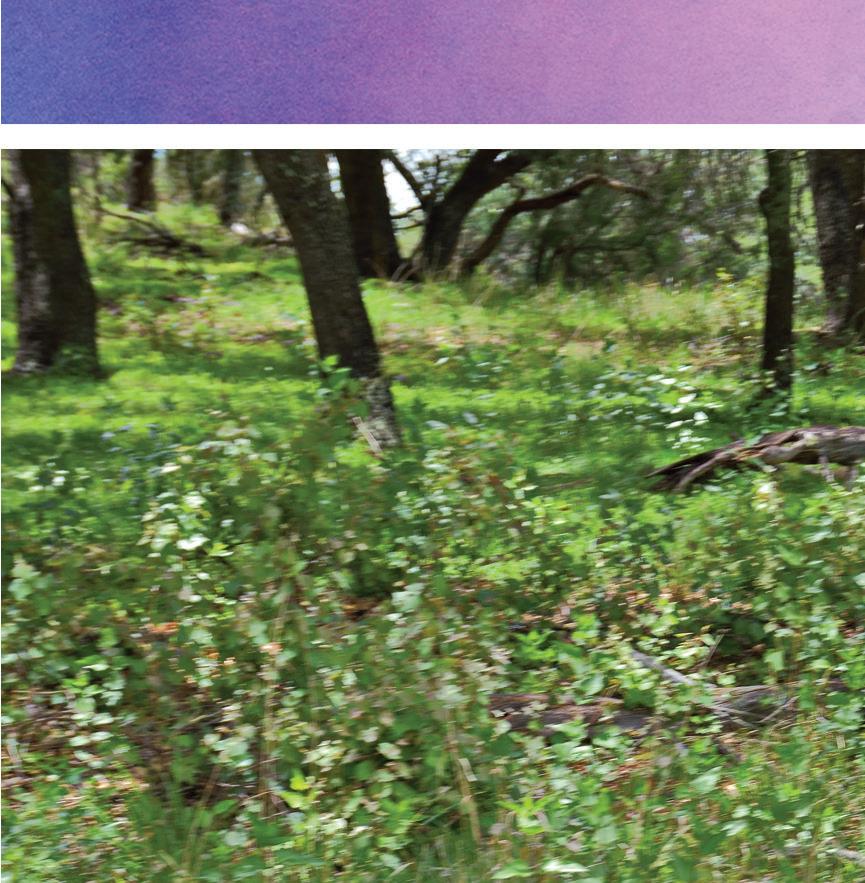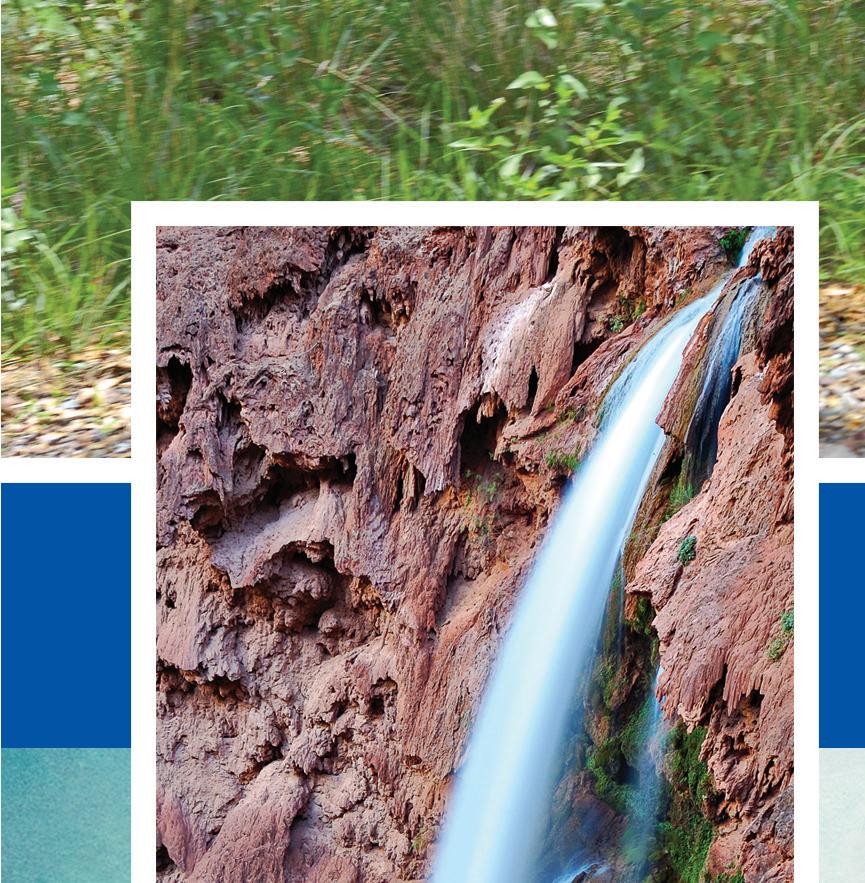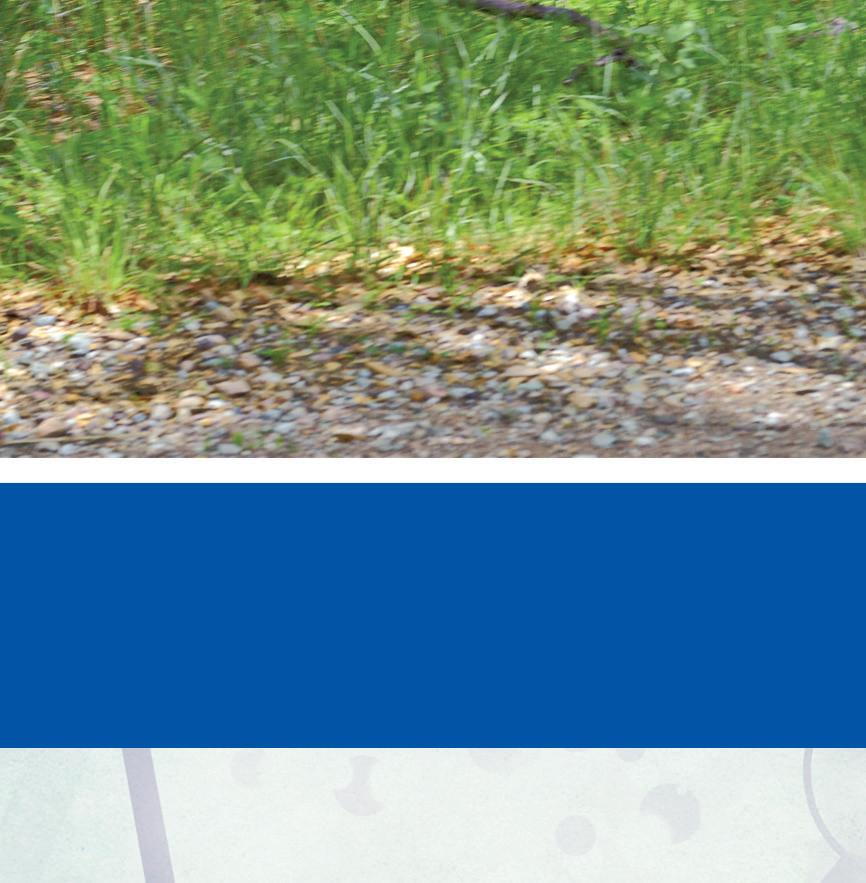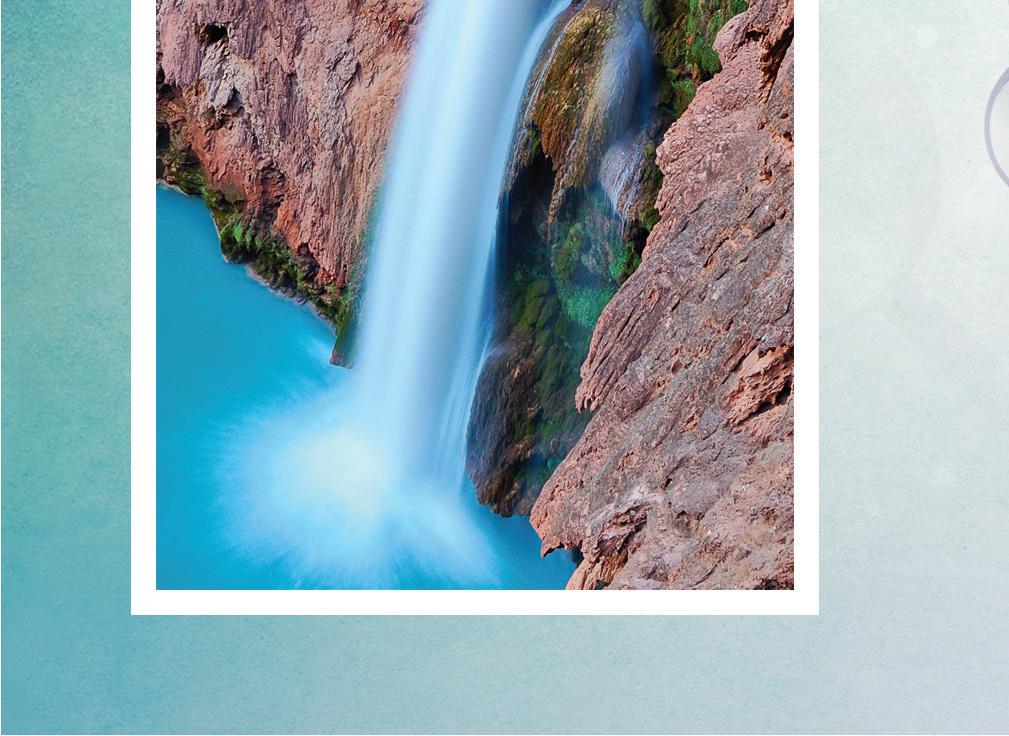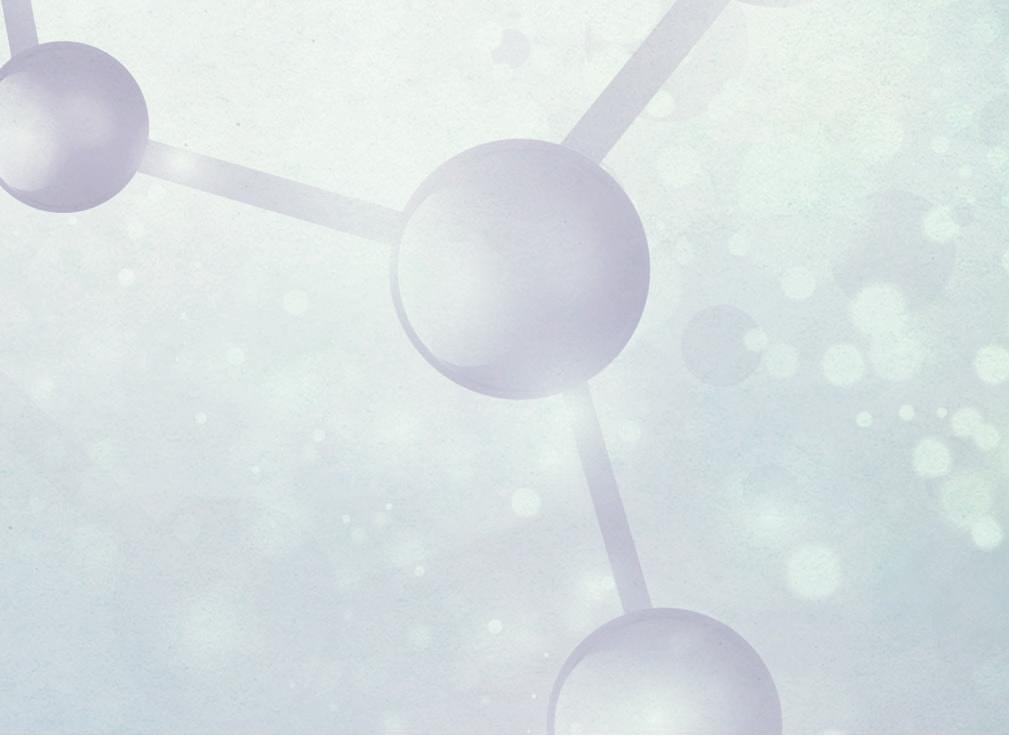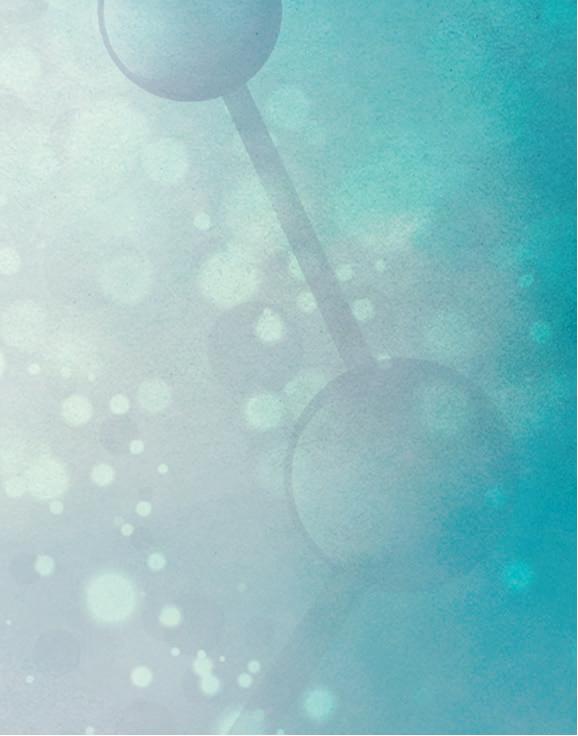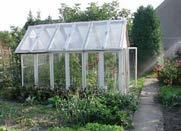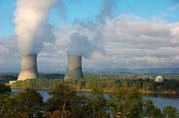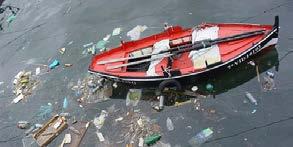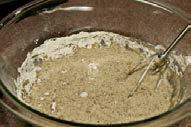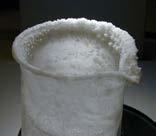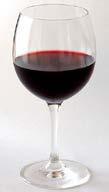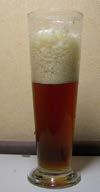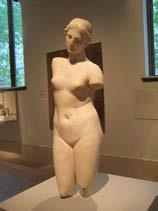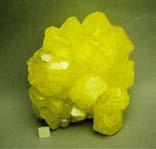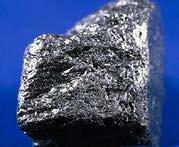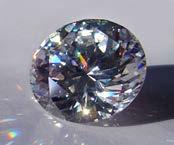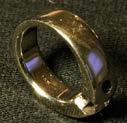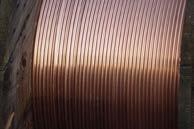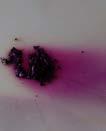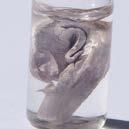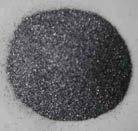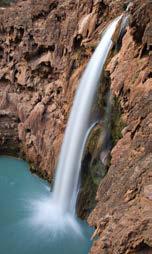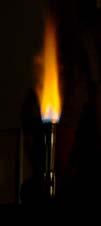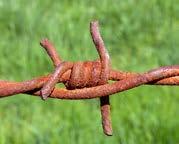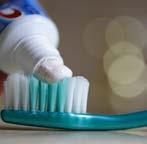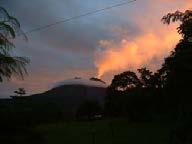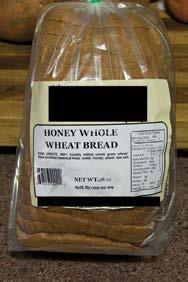Chemistry Is Everywhere
The word chemistry, especially in the title of a class or book, conjures up images of goggled scientists at their lab benches, surrounded by odd bubbling solutions in beakers and flasks. Depending upon the power of your imagination, this scene might even be punctuated in your mind by the occasional explosion. In any case, as you imagine the white-coated chemist going about her business, mixing and stirring and writing down equations rife with symbols and letters of the Greek alphabet, I practically guarantee the two things you are thinking to yourself are “What in the world does this have to do with real life?” and “When am I ever going to use this information?!” The answers to those (very real, very important) questions are everything, and every day!
In order to see the applicability of chemistry to real life, we have to stop imagining it as something that takes place in a laboratory and start looking for it in the real world. Chemists work in laboratories because they are attempting to study what goes on everywhere else, not because the lab is the only place chemistry happens! In this book, we’ll look for chemistry everywhere except the lab. We’ll learn that there’s chemistry all around us—in leaves changing colors in the fall, in the atmosphere (which keeps our planet warm and habitable, the same way a greenhouse protects roses from winter frost), in nuclear power plants, and in the food we eat, as image 1.1 demonstrates.
IMAGE 1.1. (a) Leaves change color in the fall as the light-absorbing chemical chlorophyll (which gives them their green color) is no longer produced, leaving behind other light-absorbing chemicals such as carotenes (yellow) and anthocyanin (red). (b) Just as a greenhouse made of glass traps heat to keep plants warm during cooler months, the gases of the atmosphere trap heat from the sun, keeping the planet warm and habitable. (c) Nuclear reactions have the potential to release massive amounts of energy that can be used to generate power. (d) The food we eat is made up of chemicals that provide us with energy and raw material for building muscle and other tissue.
(a)
(b)
(c)
(d)
IMAGE 1.2. The complex interplay between chemistry and society is apparent in this picture. We affect the chemistry of the oceans by adding environmental pollutants and toxins that disrupt the ecosystem. As a result, the altered chemistry of the ocean affects us. For example, mercury builds up in high-level predator fish that we use as food (tuna and shark are among these), rendering them toxic to us if consumed more than occasionally.
IMAGE 1.3. Chemistry on the individual level includes such topics as pharmaceuticals (b) and food (e). Cities need to consider the chemistry of local air pollution (c) and water safety (purification plant, a). As a global community, we are all concerned with and affected by climate change. Due to a number of factors, including economic disparity between First- and Third-World nations, international treaties to reduce carbon emissions (such as the Kyoto Protocol, with participation status represented on image d) have been unsuccessful (see Chapter 13).
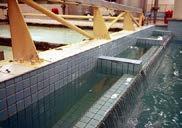
This isn’t just a chemistry textbook; it also addresses ways in which chemistry, chemicals, and chemists affect society. However, this is more complex than it sounds. It’s very important to think about the relationship between chemistry—any science, really—and society as a reciprocal one. To be sure, chemistry affects society; pollution, for instance, has a clear and unequivocal negative impact upon our air and water (Image 1.2). However, society also affects chemistry, in that our actions produce and release chemicals into the environment, and we formulate legislation that affects what can and can’t be done chemically. In this text we will be exploring the nature of this relationship and some of the ways in which chemistry and society affect each other. It’s important to note that society is multifaceted. Individuals, local communities, and the global population represent different levels of society. Any level can affect (and be affected by) any other through chemistry, as illustrated in Image 1.3. For instance, making appropriate choices regarding nutrition and exercise positively impacts personal health, but also reduces the need for medical care, which
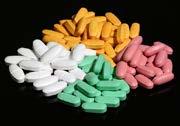
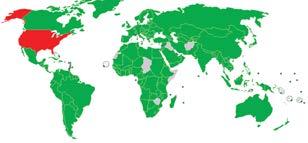
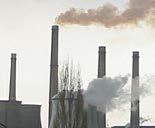

(a)
(b)
(e)
(c)
(d)
decreases insurance rates for all policyholders. A community that installs a lightrail system benefits from a reduction in local pollution, but there are also global benefits through reduced carbon emissions.
In order to address the reciprocal relationship between chemistry and each level of society, this text is divided into four units. In the first, we’ll be discussing some introductory chemical principles in the context of the chemistry we encounter every day. The second unit will address chemical concerns within local communities—things like air pollution and water safety. In Unit 3, we’ll shift our focus to the chemistry that takes place within our own bodies. Finally, in Unit 4, we’ll expand our thinking outward to encompass issues of global concern. At every step along the way, we will be focusing not simply upon chemical concepts, but on how we affect the chemistry and how the chemistry affects us.
1.1
Classifications of Matter
Stated very simply, chemistry is the study of matter Matter is anything that occupies space and has mass, so it is what makes up the physical universe. Everything we can touch, see, and smell (as well as things we can’t see, like the air around us) is made of matter. Because there are several different types of matter, we need to define some general categories.
Let’s start with mixtures, because they’re actually the easiest kind of matter to understand. Mixtures are physical combinations of two or more pure substances in variable proportions. There are two key components to this definition. First, a mixture is a physical combination, which means that each pure substance within the mixture retains its own chemical identity and properties but is interspersed with one or more other pure substances in space (where a pure substance is an element or a compound, both of which will be discussed in greater detail shortly). For instance, making pancake batter involves mixing sugar, baking soda, flour, spices, eggs, and so forth (Image 1.4). Sugar is a pure substance with distinct properties (it tastes sweet, it dissolves in water, and so on). Baking soda is another pure substance with a separate set of distinct properties. As an ingredient like sugar is added to the batter, it mixes in and spreads out through the batter until all parts of the mixture are equally sweet. The sugar, though dispersed through the batter, is still sugar—as a chemical, it remains unchanged. That’s the nature of a mixture.
Saltwater is another example of a mixture. Salt (a common name for the chemical sodium chloride, or NaCl) has distinct properties. Water (a common name for the chemical H2O) has a different set of properties. They can be stirred together to make saltwater, but the salt is still NaCl, and the water is still H2O. In other words, physically mixing salt and water means that bits of NaCl are surrounded by bits of H2O and vice versa, but the individual chemicals retain their identities and properties. If we wanted to, we could “unmix” salt water by boiling it in a pan on the stove, in which case the water would depart as steam (which is still H2O), and the NaCl would
IMAGE 1.4. When table salt (NaCl) is stirred into water (H2O), neither the salt nor the water changes chemical properties—instead, a mixture forms (a). Beating together the ingredients for pancakes makes a mixture with tasty potential (b, photo © Scott Lefler, 2010).
(a)
(b)
IMAGE 1.5. A beaker full of a saltwater mixture, if put on a burner until all the water evaporates, is left full of salt crust. The evaporating water vapor could be collected and cooled, in which case it would condense back into ordinary liquid water. The salt crust, if crushed, would be indistinguishable from table salt straight from the shaker.
be left behind as a crust on the bottom of the pan (Image 1.5). At no point in the mixing or separating process does either chemical change identities or properties.
The second key part of the definition of a mixture is that the pure substances are combined in variable proportions. This means that it doesn’t matter how much salt we mix with a given amount of water—whether we use lots of salt or only a bit, we’ll still have a mixture of saltwater.
Chemicals that can be physically combined to produce mixtures are called pure substances, and can be divided into two subcategories: elements and compounds. Elements are the simplest types of matter and are found listed on the periodic table (Image 1.6); they cannot be broken into simpler substances by any chemical means. When you look at the periodic table, you’ll notice that it’s made up of many elements, each with a characteristic atomic symbol, which is a letter or combination of letters that represents the element. C, for instance, is the atomic symbol for the element carbon. Each element has its own unique physical and chemical properties (Image 1.7). Some, like neon (Ne), are gases at room temperature, while others are liquids or solids. Many, like gold (Au), uranium (U), and mercury (Hg) are metals, while others, like sulfur (S), are not. We’ll look more closely at properties of specific elements and at the organization of the periodic table later in this chapter.
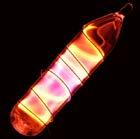
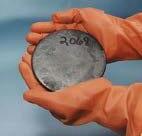
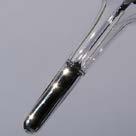
IMAGE 1.7. Some elements (clockwise from top left): neon (Ne) can be used to make glowing signs(a); mercury (Hg) is the only metal that’s liquid at room temperature, and is used in thermometers (b); gold (Au) is a beautiful, butter-yellow metal highly prized for its aesthetic appeal and scarcity (d); uranium (U) is used in nuclear reactors to generate energy (c).
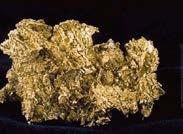
Compounds are chemical combinations of two or more elements in fixed, characteristic proportions. Notice the differences between the definition of a compound and the definition of a mixture. First, where mixtures are physical combinations in which each pure substance retains its identity and properties, compounds are chemical combinations, meaning that a chemical bond forms between particles of two or more different elements. A chemical bond is a little like glue—it sticks two particles together. The compound has an identity and properties that are different from the identities and properties of the elements that make it up. For instance, carbon dioxide (CO2) is a compound made from a chemical combination of the elements carbon and oxygen, but CO2 is nothing like either carbon or oxygen—it is its own separate, distinct substance. Another major difference between compounds and mixtures is that compounds must consist of fixed proportions of the constituent elements. While we can use any quantity of salt and any quantity of water to make saltwater, CO2 is only CO2 if it’s made up of one particle of carbon and two particles of oxygen. Image 1.8 provides two ways to visualize the combination of carbon with oxygen to form CO2. The subscripts in the compound’s formula tell us how many particles of each element are chemically combined to form the compound, where the lack of a subscript is always taken to mean one. If one particle of carbon and one particle of oxygen combined chemically, the resulting compound would not be CO2. Instead, it would be CO—carbon monoxide—which has very different properties
IMAGE 1.8. Two representations of the compound CO2. The figure on the top (a) shows that an atom of carbon is chemically combined with two atoms of oxygen. This representation is often called a “ball and stick” model, because it represents the atoms as “balls” on either end of chemical bonds, which are represented as “sticks.” In reality, bonds form when atoms sort of squish together in space, as represented in the image on the bottom. This is called a spacefilling model, and while a bit more accurate, it’s harder to draw.
(b)
(d)
(a)
(c)
(a)
(b)
IMAGE 1.9. Some commonly encountered compounds include (clockwise from top left): water (H2O; a), sucrose (table sugar, C12H22O11; b); calcite (the major ingredient in marble, CaCO3; e); and ethanol (the alcohol in beer, wine, and liquor, C2H6O; c and d). Crater Lake photo © Scott Lefler, 2006.
CONCEPT CHECK
What’s the difference between a mixture and a compound? Answer: A mixture consists of two or more pure substances, physically combined in variable proportions. A compound consists of two or more elements, chemically combined in variable proportions.
NOTE 1
This statement seems paradoxical at first—how can we say that elements are the simplest type of matter, and then say that if we were to divide an atom of an element (gold, for instance), we’d get something that was not gold? We’ll discuss this more in Chapter 2, but as it turns out, we can’t really “cut” an atom and get pieces that hang around at all. If an atom were (theoretically) divided, the resulting pieces would be what are called subatomic particles, and we don’t find them on their own (in a persistent state) in nature.
than CO2. Carbon dioxide is a waste product of respiration, but it also plays an important role in helping to regulate the acidity of the body’s fluids, as we’ll see in Chapter 5. Carbon monoxide, on the other hand, is (among other things) a pollutant gas formed through combustion of certain fuels, and it is toxic when inhaled. Much of what we see in the world around us is made up of various compounds (Image 1.9). CO2 can be classified further—in addition to being a pure substance, it’s also a molecule A molecule is a pure substance made from the chemical combination (through formation of bonds) of two or more atoms. An atom is the smallest particle of an element that maintains the identity of that element. In other words, if I had a chunk of the element gold (Au on the periodic table) and I cut it in half, I’d have a smaller chunk of gold. If I cut that smaller chunk in half, and then cut the half in half, and so forth, eventually I’d get to a very, very tiny particle of gold that couldn’t be cut in half (or at least, if it were, it wouldn’t be gold anymore1). This tiny, indivisible particle of gold is an atom (the word atom comes from the Greek word atomos, which means indivisible). All matter is made up of atoms, some of them uncombined and some of them in chemical combination with other atoms. A molecule of CO2 is made up of one atom of carbon and two atoms of oxygen. It’s important to note that the words compound and molecule are not synonymous. It’s absolutely possible to have a molecule that is not a compound, as long as it’s made of two or more atoms of the same element. For example, most respiring organisms require oxygen, which is found in our atmosphere as the molecule O2. However, atoms of the element oxygen can also be found incorporated into compounds (like CO2). Uncombined atoms of oxygen aren’t found in nature, for reasons that will be
(a)
(b)
(c)
(d)
(e)
discussed in later chapters. O2 is made of two atoms of oxygen, so even though it’s a molecule, O2 is an element rather than a compound. In nature, some elements are found as uncombined atoms; examples include helium (He) and neon (Ne). Other elements occur most frequently as diatomic molecules (molecules consisting of only two atoms) such as O2 and N2. Still others occur naturally as polyatomic molecules, or molecules composed of many (poly means “many”) atoms. Sulfur, for instance, is most commonly found in nature as S8 (Image 1.10). Atoms, molecules, elements, compounds, and mixtures are visually summarized in Image 1.11.
One question students often have regarding elements is how to know whether they are found in nature as single atoms, diatomic molecules, or polyatomic molecules. The answer is that, frankly, it’s a bit complicated! There are a few general guidelines, though, that are good to know. The elements that naturally form diatomic molecules are H, N, O, F, Cl, Br, and I (Image 1.12), and it’s quite useful to know this about them, because we’ll be talking frequently about several of these elements.
The elements in the far-right column of the periodic table tend to be found as free atoms, and we’ll learn why in Chapter 3. One other element whose form in nature is worth mentioning is carbon. Most of the carbon atoms we’ll see in this class will be chemically combined with other elements, because carbon is a very common
IMAGE 1.10. The polyatomic molecule S8 is a crystalline, yellow solid that smells faintly of rotten eggs.
CONCEPT CHECK
What’s the difference between a molecule and a compound?
Answer: A molecule consists of two or more atoms, chemically combined. A compound consists of two or more elements, chemically combined.
IMAGE 1.11. An atom of oxygen (top left) is a pure substance, an element, and, of course, an atom. A diatomic molecule, oxygen (O2, top right) is also a pure substance and an element. A molecule of carbon dioxide (CO2, bottom right) is a pure substance, a compound, and a molecule. At the bottom left, a mixture of ethanol (the larger molecules in the mixture; C2H6O) and water (the smaller molecules in the mixture; H2O) contains molecules of both compounds, physically stirred together but chemically unchanged.
TRY THIS
Which of the following are pure substances, and which are mixtures?
Of the pure substances, which are elements, and which are compounds?
Which are atoms, and which are molecules?
Fe, FeCl 2 , sugar water, silver (Ag on the periodic table), maple syrup, Cl 2
Answers: Fe is a pure substance, an element, and an atom. FeCl 2 is a pure substance, a compound, and a molecule. Sugar water is a mixture. Ag is a pure substance, an element, and an atom. Maple syrup is a mixture. Cl 2 is a pure substance, an element, and a molecule.
NOTE 2
If graphite and diamond are both made of carbon, why is diamond so much more valuable than graphite?
The quick answer is that it’s much harder and more durable because of the arrangement of atoms. It’s also aesthetically pleasing. These two factors combine to make it a good candidate for jewelry (among other things), and because it’s rare, it comes at a high price. From a chemical perspective, diamond is actually less stable than graphite, meaning that very slowly over time, diamond turns into graphite! Don’t worry; it doesn’t happen on a human timescale, so your diamonds will still be around for your grandchildren. Still, it’s interesting to think about!
IMAGE 1.12. The elements that exist in nature as diatoms are indicated on this periodic table.
component of compounds in nature. However, elemental carbon is also common— probably more so than you think—and it can be found in several different forms with very different properties. Two of the most frequently encountered forms of elemental carbon are graphite and diamond. These differ only in the way in which carbon atoms are arranged and chemically bonded to one another.2 Looking at the arrangement of atoms in these two forms (Image 1.13) helps us to understand some of the differences in their physical properties and appearances. Graphite’s structure is composed of carbon atoms bonded into flat plates. These plates lie on top of each other but are independent and can slide past one another easily. This sliding capability within the structure of graphite makes it soft and easily spread onto a surface (hence its utility as pencil “lead”). Also, it makes graphite a good lubricant in mechanical applications. Diamond, on the other hand, has carbon atoms arranged in a crystal lattice in which each atom is bonded to all nearby atoms. This structure is incredibly rigid, giving diamond its unique hardness.
One of the themes that we will see repeatedly in this class is the pervasiveness of chemistry. Even when we don’t think we’re talking about chemistry, much of the time we are. For instance, let’s ponder jewelry for a moment. This is a topic that seems very far removed from anything we might traditionally associate with chemistry. However, because it occupies space and has mass, jewelry must be made of matter, and chemistry is the study of matter. It becomes a little more complicated
when we try to ask ourselves of what kind of matter jewelry is made. Take, for example, a gold ring. If you look inside a gold ring, you’ll see a stamp that says 14K, 18K, or some other number followed by a “K” to indicate the material of the ring3 (Image 1.14).
Pure gold is an element (Au on the periodic table), and while aesthetically pleasing and rare, which combine to make it valuable, it’s far too soft to be used in jewelry designed for daily wear. As such, elemental gold is mixed with other elements like nickel (Ni) and palladium (Pd). A “gold” ring, therefore, is actually made of a mixture rather than a pure substance. 0,15nm
IMAGE 1.14. The stamp inside a gold ring indicates what fraction (parts out of 24) of the metal mixture is the element Au. Photo © Scott Lefler, 2010.
IMAGE 1.13. Note the difference in appearance between graphite (top left) and diamond (bottom left), both of which are forms of the element carbon.
NOTE 3
If you’re curious, the “K” is for karat, which is just a way of indicating what fraction of the metal mixture is elemental gold. By definition, 24K is elemental gold, in which 24/24 parts of the metal are gold. 18K gold has 18/24 parts elemental gold, and 6/24 parts other metals. Metallurgists blend in various metals to affect the color and properties of the resulting alloy (mixture) in addition to strengthening the gold.
(a)
(b)
(d)
(b)
IMAGE 1.15. This periodic table has metals, nonmetals, and metalloids indicated. 1.2
The Periodic Table
The periodic table of the elements contains a lot of information; we won’t go over it all just yet. However, one interesting organizational feature of the table is that it divides elements into three distinct categories based upon their position on the table, as shown in Image 1.15.
Metals, which are shiny, ductile (can be drawn into wires), conductive (can conduct electricity), and malleable (can be hammered into sheets), are located in the two columns on the left-hand side of the table and in the central, recessed portion (these recessed elements are called transition metals). Also, the two rows of elements that appear below the table (as though they were kicked out) are metals. The rows classically displayed under the periodic table actually fit into the center of the table as shown in Image 1.16. There are a few explanations commonly given for the fact that these elements, sometimes called the inner transition elements, are conventionally placed under the periodic table. One is that they were not yet discovered when the classical periodic table was developed, so room was not made for them. Another explanation is that they make the table absurdly long and difficult to display on wall posters and in text figures!
Nonmetals, which are almost always either gases or solids4 at room temperature, have physical properties opposite those of metals. They are dull rather than shiny, brittle rather than ductile or malleable, and nonconductive. Nonmetals are located on the right-hand side of the table. The element hydrogen (H) shows up in two places in many periodic tables. This is because it has some properties in common with metals and some properties in common with nonmetals, as we’ll see in more detail in later chapters. Hydrogen’s technical classification, however, is as a nonmetal.
Along a diagonal line between the metals and nonmetals are the metalloids, whose physical properties are between those of metals and nonmetals, and many of which are also semiconductors. Some of the metalloids are useful in making photovoltaic cells for solar-power panels (as we’ll see in Chapter 11), as well as in computer applications. Image 1.17 illustrates the visual differences among metals, nonmetals, and metalloids.
IMAGE 1.16. An “extended” periodic table of the elements.
TRY THIS
Classify each element as a metal, metalloid, or nonmetal.
Fe, B, I, Kr, Ca, U, Si.
Answers: The metals are Fe (iron), Ca (calcium), and U (uranium). The metalloids are B (boron) and Si (silicon). The nonmetals are I (iodine) and Kr (krypton).
NOTE 4
There’s one liquid nonmetal: bromine (Br 2 ).
IMAGE 1.17. Copper (a) has all the properties of metal: it’s shiny, ductile, conductive, and malleable. Sodium (b) is a metal (shown here in liquid paraffin to keep it from reacting with air), but we don’t find it looking traditionally metallic in nature because it’s so reactive and combines with other elements in compounds like table salt. Silicon (e) is a metalloid (and a semiconductor) commonly used in computer chips. The nonmetals include gases such as chlorine (a toxic yellowish gas, bottom center), and brittle, nonconductive solids such as iodine (c).
(a)
(b)
(c)
(d) (e)
As you look at the elements on the periodic table, you’ll notice a number of names among the metals that belong to substances you may never have thought of as metallic, like sodium (Na) and calcium (Ca). Elemental sodium and calcium are both shiny metals. They have all the properties of more familiar metals like aluminum and silver, but, oddly enough, they are soft. Sodium can actually be cut with a butter knife! The reason we don’t find these elements in their metallic form in nature is that they are very reactive and readily combine with other elements to form compounds. For instance, you commonly encounter the element sodium as part of the compound sodium chloride (NaCl), which is table salt.
1.3
Thinking About Chemicals, Chemical Reactions, and Chemical Equations
IMAGE 1.18. Macroscopic, microscopic or molecular (a), and symbolic (b) representations of the compound water. Havasupai Falls picture © Scott Lefler, 2007.
It’s fundamentally a bit difficult to be a student of chemistry, because unlike some of the other sciences, chemistry doesn’t really afford us the opportunity to see and manipulate the object of our examination. In biology, we can touch the fetal pig we’re dissecting or turn over the leaf we’re sketching. Even bacteria, which are invisible to the naked eye, can be viewed with the help of a microscope. Chemistry is a little different. Even though we can go to the lab, mix a few chemicals, and note a color change or bubbling or some other visible evidence of a reaction, we have to take our instructor or lab manual at face value when they tell us what the chemicals are and what reaction is occurring. We can’t see the molecules, and we can’t watch bonds break and reform. As a result, the study of chemistry involves employing a variety of visualization aids. Let’s take the example of water. We can think about water on a macroscopic level, meaning in terms of what we actually see; it’s a clear liquid. We can also think about water on a microscopic level, or in terms of how the atoms are arranged; an atom of oxygen is bonded to two separate atoms of hydrogen.
Finally, we can symbolically represent water in a concise way that provides information about its chemical composition; water has the formula H2O (Image 1.18). Depending upon what it is we’re trying to communicate or what we’re trying to imagine, we might pick any one or a combination of these strategies to visualize the compound water. For instance, if I wanted to communicate to you that the chemical methane (CH4) burns in oxygen (O2), making carbon dioxide (CO2) and water (H2O), it would be sufficient to symbolically represent chemicals with their formulas—no further information is needed. In Chapter 13, however, we’ll need to think about the shape of a water molecule in order to understand the greenhouse effect. Because of that, we’ll spend a lot of time thinking about its microscopic representation, in which we concentrate on the physical arrangement of the atoms in the molecule and its shape in space.
Let’s take a closer look at the chemical reaction mentioned in the previous paragraph. Methane (CH4) is a member of the class of chemicals collectively called hydrocarbons because they’re composed of carbon and hydrogen. We’ll be talking about
hydrocarbons frequently in this textbook, in part because they all burn in oxygen (in chemistry, burning is called combustion) to produce carbon dioxide and water. Have you ever barbecued on a gas grill? If so, you’ve combusted the hydrocarbon propane (C3H8). If you’re a camper, you’ve probably used a camp stove that runs on the hydrocarbon butane (C4H10). Have you fueled your car recently? That was a mixture of, among other things, octane (C8H18) that you put in the tank, and likely some ethanol (C2H5OH) as well.5 When we describe the behavior of methane in oxygen, we are describing a chemical reaction, which is a rearrangement of atoms and molecules to form new molecules. The original chemical species are called the reactants, and the resulting chemical species are called the products. In the example above, methane and oxygen are reactants, while carbon dioxide and water are products.
In addition to describing a reaction in words, we can represent it symbolically. Let’s take the example of a very simple chemical reaction with only two reactants and one product. Sulfur (S) combines with oxygen (O2) to produce sulfur dioxide (SO2). Represented microscopically, the reaction looks like this:
SS OO OO +
While this is a convenient way to visualize the rearrangement of atoms and molecules taking place in the reaction, it quickly becomes prohibitive to draw microscopic representations of reactants and products, especially in more complicated reactions. Chemical equations are symbolic representations of chemical reactions. The chemical equation for the reaction above would look like this:
S + O2 → SO2
The arrow indicates that the reactants sulfur and oxygen6 (S and O2) are rearranging to form the product sulfur dioxide (SO2). Aloud, this would read, “sulfur and oxygen react to form sulfur dioxide.”7
You may be asking yourself right about now: “Why would I want to know how to write out a chemical equation, since I’m not a chemist?” That’s a valid question. The answer is that in order to talk meaningfully about chemistry in everyday life, we’ll need to speak a little bit of the language of chemistry, which is written in terms of reactants, products, and reactions.
1.4 Balancing Chemical Equations
Some chemical reactions end up causing us a bit of trouble when we try to write them out as chemical equations. Take, for instance, the true statement that elemental hydrogen (found in nature as a diatomic molecule, remember?) burns in oxygen to form water. When we write out an equation, we get something that looks like this:
NOTE 5
Compounds like ethanol are called hydrocarbon derivatives—these compounds are mostly carbon and hydrogen, but contain small amounts of other elements, such as N, O, or S. Many of them, like ethanol, also combust in oxygen.
6
Why do we call O2 oxygen when an atom of O is also called oxygen ? This is a slightly confusing issue, and it’s worth addressing. Even though an atom of O is called oxygen , atomic oxygen is rarely found on its own in nature—it’s almost always combined into molecules. Elemental oxygen in nature is found as the molecule O2. It’s so common, in fact, that rather than saying molecular oxygen or diatomic oxygen , we simply call it oxygen. Generally, we can figure out what is meant by the word oxygen from its context. If I say, “CO2 consists of one carbon and two oxygens,” you pretty well know that I mean atoms of oxygen. If I say, “The atmosphere is made up of 21% oxygen,” you should know that elemental oxygen found in nature is always O2. If the context leaves doubt as to what is meant, we generally reserve oxygen for O2, and say atomic oxygen or an atom of oxygen for O.
NOTE 7
Alternately, we could use the words produce or, if we want to be very technical, yield , instead of form.
+ O2 → H2O
TRY THIS
In the reaction of carbon and oxygen to form carbon dioxide, what are the reactants and the products?
Answer: The reactants are carbon and oxygen, and the product is carbon dioxide.
Looking closely, it seems that we have a problem. There are two atoms of hydrogen (the subscript tells us that one molecule of hydrogen consists of two atoms of hydrogen chemically bonded together) and two atoms of oxygen on the reactant side of the equation. However, there are two atoms of hydrogen and only one atom of oxygen on the products side. A microscopic representation of the equation makes this very clear:
NOTE 8
Tempting though it might be to balance the oxygen atoms by changing the product to H 2 O 2 , the chemical truth is that in this reaction, hydrogen and oxygen combine to form water, which is H 2 O. H 2 O 2 (while appearing to balance the equation nicely) is not water. It’s hydrogen peroxide, which is a very different chemical indeed!
Where did the second atom of oxygen go? The answer is nowhere—atoms can’t disappear (nor can they appear!)—that’s a fundamental law of nature. The above is therefore not an accurate representation of the chemistry, because it’s not a balanced equation. Balanced equations obey the Law of Conservation of Matter, which means that atoms cannot appear, disappear, or change into atoms of other elements through any chemical reaction. In order for an equation to be chemically correct, we must ensure that there is the same number of each type of atom on each side of the equation. In order to do this, we can specify that different amounts of each reactant or product are involved in the reaction, but under no circumstances can we change the subscripts associated with any element in any molecule8 To specify that there is more than one of any given chemical involved in a reaction, we use a coefficient in front of the species (the lack of a coefficient in front of a species is always taken to mean one). In this case, we need two water molecules to balance the oxygen atoms and two hydrogen molecules to account for the hydrogen needed to form the second water molecule. Our equation, correctly balanced, becomes:
H2 + O2 → 2 H2O
Doing a quick atomic head count, this gives us four hydrogen atoms and two oxygen atoms on each side of the equation:
H2
HH H H OO
+
2
Even though we started with three molecules and ended up with two, we’ve conserved the numbers and identities of the atoms. In chemical reactions, reactants and products can contain different numbers of molecules, but they must contain exactly the same number and type of atoms, which is why we count atoms rather than molecules when balancing equations.
Some equations are a bit more difficult to balance. Let’s return, for instance, to the reaction between methane and oxygen that produces carbon dioxide and water (Image 1.19):
CH4 + O2 → CO2 + H2O
An examination of this equation reveals that it’s not balanced. Unlike the hydrogen and oxygen reaction, however, this one is difficult to balance simply by looking at it. A good technique for balancing reactions like this follows a series of steps:
1. Identify an element that appears in one compound (do not pick elements that appear alone—save these for last!) on either side of the equation. Balance that element by adjusting the coefficients for molecules containing the element.
Oxygen appears in our reaction as a free element (O2), so we’ll save it for last. Carbon and hydrogen are both good Step 1 candidates, as they appear in only one compound on either side. We can therefore start with either carbon or hydrogen.
CH4 + O2 → CO2 + H2O
Carbon is already in balance; there is one atom of carbon on each side of the equation.
2. Repeat Step 1 for remaining elements other than free elements.
Hydrogen needs to be balanced; we can accomplish this by adding the coefficient 2 in front of the product H2O
CH4 + O2 → CO2 + 2 H2O
There are now four atoms of hydrogen on each side of the equation.
3. Balance any remaining elements.
Oxygen can now be balanced. There are four total oxygen atoms on the right—two from CO2, and one from each of the two waters—so we need four total oxygen atoms on the left. We therefore add the coefficient 2 in front of the reactant O2
CH4 + 2 O2 → CO2 + 2 H2O
This is a balanced equation.
CONCEPT CHECK
Why did we have to change the number of hydrogen molecules and water molecules in the equation, but not the number of oxygen molecules?
produce carbon dioxide and water.
IMAGE 1.19. A Bunsen burner combusts methane (CH4) in oxygen to
Answer: By changing the number of water molecules (to get equal numbers of hydrogen atoms on each side of the equation), we ended up with equal numbers of oxygen atoms on each side.
TRY THIS
Balance each of the following equations: ___S 8 + ___O 2 →___SO 3 ___N 2 + ___O 2 → ___N 2 O ___C 10 H 16 + ___Cl 2 → ___C +___HCl
Answers: S 8 + 12 O 2 → 8 SO 3 2 N 2 + O 2 → 2 N 2 O C 10 H 16 + 8 Cl 2 → 10 C + 16 HCl
1.5
Nomenclature
Shakespeare said in Romeo and Juliet that “a rose by any other name would smell as sweet,” but as it turns out, naming is critically important in chemistry! You’ve seen a few chemical formulas coupled with names so far in this chapter, so you may be getting familiar with the way the names tend to sound. For instance, it was mentioned earlier that a compound consisting of sodium (Na) and chlorine (Cl) is called sodium chloride, and I’ll tell you right now that a compound of rubidium (Rb) and fluorine (F) is called rubidium fluoride; there’s a pattern there. Just to throw a wrench in the works, however, a compound of carbon and oxygen is never called carbon oxide. Why? The short answer is that there are several ways in which carbon and oxygen can combine9 and using the (incorrect) name carbon oxide doesn’t help us to distinguish them from one another. Clearly, we need to outline some rules for how to name compounds. Knowing a little bit of nomenclature (which means a system for naming) helps us to understand one another when we are discussing chemistry. The easiest compounds to name are binary compounds, which are made up of two (and only two) different elements. There are lots of compounds made of more than two elements, but their nomenclature is much more complex. Of course, anything made up of only one element is not a compound at all. Binary compounds may consist of a metal and a nonmetal or a nonmetal and a nonmetal. Compounds of metals with metals, while they exist, are exceedingly esoteric and atypical, and are far beyond the scope of this class.
Binary Compounds—Metal and Nonmetal
NOTE 9
Two examples include CO (carbon monoxide) and CO 2 (carbon dioxide).
To name a binary compound made of a metal and a nonmetal, we use the name of the metal followed by the name of the nonmetal, adding the suffix -ide to the nonmetal. You may need to drop some letters to do this phonetically—sulfur becomes sulfide, and oxygen becomes oxide. These sorts of compounds are often called salts (Image 1.20).
Example: A compound of the metal barium (Ba) and the nonmetal oxygen (O) is called barium oxide.
Example: The compound LiF is called lithium fluoride.
Note that chemical formulas for binary compounds of metals and nonmetals are written in the same order in which the name is given—metal first. When there are subscripts in the chemical formula of a compound, we ignore them in naming the compound.
Example: The compound AlCl3 is called aluminum chloride.
The reason we don’t reference the relative number of atoms of each element when we name the compound is that metals can generally only combine with a given nonmetal in one possible way.10 In other words, when lithium and fluorine combine, the only possible combination is LiF. When aluminum and chlorine combine, the only possible combination is AlCl3. How would you know this? As it turns out, there are some rules we’ll learn in Chapter 4 that we can use to figure out what combination is possible for a given metal and nonmetal. In the meantime, though, we’ll have to satisfy ourselves with predicting names from formulas. We can’t predict formulas from names just yet because the names don’t tell us how many atoms of each element are present.
Binary Compounds—Nonmetal and Nonmetal
Like salts, binary compounds of metals and nonmetals are ubiquitous in the world around us (Image 1.21). To name a binary compound made of two nonmetals (or in the much rarer case of a metalloid and a nonmetal), we name the element closer to the left side of the periodic table first, then the element closer to the right side, adding the suffix -ide to the second element. Additionally, we need to make reference to the number of atoms of each element present, using the Greek prefixes listed below:
Example: The compound N2O is called dinitrogen monoxide (nitrogen is closer to the left side of the periodic table, so it is named first and written first in the formula). If there’s only one of the element closer to the left side (the one we’d write or say first), we leave off the prefix. In other words, we never start the name of a compound with “mono.”
Example: The compound CO2 is called carbon dioxide.
We may need to drop vowels from the end of the Greek prefix when element names begin with vowels in order to make the name phonetically sensible.
Example: The compound CO is carbon monoxide
IMAGE 1.20. Binary compounds of a metal and a nonmetal are also called salts. They are solid compounds with some interesting chemical properties that will be discussed further in Chapter 4. Among the binary compound salts we commonly encounter (besides table salt, of course!) are one form of iron oxide (Fe2O3), which is rust, and sodium fluoride (NaF), used in toothpaste.
TRY THIS
Name each of the following: K 2 O, MgS, AlF 3
Answers: Potassium oxide, magnesium sulfide, aluminum fluoride.
NOTE 10
As we’ll learn in Chapter 4, metals combine with nonmetals by becoming positively charged. Some metals can form more than one possible charge, but the specific charge determines the number of (negatively charged) nonmetal particles with which the metal particle will combine, and for each charged metal particle, there is only one possible combination ratio with a specific nonmetal particle.
(a)
IMAGE 1.21. Binary compounds of two nonmetals or of a metalloid and a nonmetal may be gaseous like the volcanic gas sulfur dioxide, liquid like water, or solid like silicon dioxide (sand). Volcano Arenal, Costa Rica © Kirstin Hendrickson, 2002. Costa Rica beach © Kirstin Hendrickson, 2002.
Number of atoms of an element Prefix 1 mono
di
tri 4 tetra
penta
hexa
TABLE 1.1. Prefixes used in nomenclature.
TRY THIS
Name each of the following: CF 4 , PCl 5 ,
Answers: Carbon tetrafluoride, phosphorus pentachloride, carbon disulfide.
TRY THIS
Predict formulas for each of these names: silicon tetrafluoride, dinitrogen trisulfide, diboron hexahydride.
Answers: SiF 4, N 2S 3, B 2H 6
The two examples above demonstrate why we need prefixes to indicate the relative number of each atom; unlike compounds of metals and nonmetals, nonmetals can combine with other nonmetals in many different ways. The prefixes help us know to which of the many possible combinations of two given nonmetals we refer.
1.6
The Last Word—Chemical Free?
One thing you’ll notice as you start to look at chemistry in the real world is that chemicals are often treated as something to be avoided. People tend to crave the “natural” and fear or dislike the “unnatural,” but the lines drawn to separate the two are often randomly placed and inaccurate. In particular, the word chemical is frequently taken to be synonymous with unnatural and treated as something to be avoided. Case in point: I was reading the label on a loaf of bread not long ago while making toast. I noticed that, in an attempt to reassure the segment of society interested in “natural” foods, the bread claimed to be “chemical free.”
Of course, chemical is simply another way of saying matter, so no physical material is chemical free any more than it can be matter free. As we’ve learned in this chapter, atoms and molecules, elements and compounds are all chemicals. Just for emphasis, the bread’s ingredients included: whole wheat flour (a mixture of elements and compounds, chief among them amylose [a large molecule consisting of lots of C, H, and O] and cellulose [a different large molecule, also made of C, H, and O]); water (the molecule H2O); honey (a mixture of elements and compounds, including lots of the sugars fructose and glucose, both of which are compounds consisting of C, H, and O); yeast (an organism composed of a variety of chemicals); and sea salt (again, a mixture of chemicals, but comprised primarily of NaCl). The bread contains nothing but chemicals!
As you look around, nothing you can see or touch is chemical free; even things you can’t see, like the air you breathe, are made of chemicals. The paper in the pages of a book is made from the chemical cellulose (which comes from plants). All the food you eat is composed of various chemicals, just like the bread we’ve been discussing. The water you drink is a chemical. Air is a mixture of many chemicals, including the O2 your cells need.
Of course, a devil’s advocate would say that the expression “chemical free” is nothing more than a concise way to say “free of unnatural chemicals that will cause harm.” Touché, but as we’ll see later, even the idea that “unnatural” equals “bad” and “natural” equals “good” is fundamentally flawed. Furthermore, it can be quite difficult to draw lines between natural and unnatural. More than anything, the point is simply that where chemistry and society intersect, society can respond with a fear of the unknown, and that fear may lead to irrational (and scientifically unfounded) behavior and ideas. Discussing these departures from logic makes us aware of them, and we may begin to evaluate the reasoning behind our behavior, the logic that informs our reasoning, and the efficacy of our logic.
SUMMARY OF MAIN POINTS
• Chemistry is all around us. Everything that occupies space and has mass is made of chemicals, and chemical reactions take place all around us and inside us all the time.
• When we think about the interaction between chemistry and society, we have to consider the individual, community, and global levels of society.
• Chemistry is the study of matter, which consists of mixtures and pure substances. Pure substances include elements and compounds.
• A pure substance can be atomic or molecular in nature; molecules can either be elements or compounds.
• The elements on the periodic table can be divided into three broad categories by their position on the table: metals, nonmetals, and metalloids. Each of these categories has characteristic properties.
• When we think about chemicals, we can consider them from macroscopic, microscopic, and/or symbolic perspectives, depending upon what we’re trying to communicate.
• Chemical equations are symbolic representations of chemical reactions, consisting of reactants and products separated by an arrow.
• Chemical equations must obey the Law of Conservation of Matter, which states that atoms may not appear, disappear, or change into atoms of other elements during a chemical reaction. In other words, equations must be balanced.
• Balancing equations must be done by adjusting coefficients in front of the reactant or product species; subscripts within chemical formulas may not be changed.
• Binary compounds of a metal and a nonmetal (salts) are named without referencing subscripts. The metal is named first, then the nonmetal (with the suffix -ide).
• Binary compounds of two nonmetals are named using Greek prefixes to indicate the number of atoms of each element. The element closer to the left side of the periodic table is named first, followed by the one closer to the right side of the periodic table (with the suffix -ide).
IMAGE 1.22. “Certified chemical free” bread. Photos © Scott Lefler, 2010.
(a)
(b)
QUESTIONS AND TOPICS FOR DISCUSSION
1. Provide an example of each of the following relationships with regard to chemistry (do not use examples discussed in the text):
• Individual behavior affects that individual
• Individual behavior affects society
• Behavior of a society affects an individual
• Behavior of a society affects that society
• Behavior of a society affects another society.
2. How does chemistry in a lab help us to understand chemistry in the “real world”? What are the limitations of studying chemistry in a lab?
3. With regard to chemistry, do you think that there are any examples of individual behavior that have no effect whatsoever upon society? Justify your answer.
4. What do you think might be some of the challenges associated with the fact that one individual/group/nation can behave in a way that impacts chemistry on a global level?
5. Using only items you could find around yourself in everyday life (i.e., not in a lab), give an example of a mixture. Give an example of a compound. Give an example of a pure element.
6. Explain the primary differences between mixtures and pure substances.
7. Explain the primary differences between mixtures and compounds.
8. Are molecules necessarily compounds? Why or why not? Are compounds necessarily molecules? Why or why not?
9. Does matter have to be visible? Think of an example of invisible matter.
10. Provide an example of when the word nitrogen would be understood from context to mean an atom of N. Provide an example of when the same word would be understood from context to mean a molecule of N2. Provide an example of when the meaning might be ambiguous and clarification would be required.
11. Think of a compound that interests you and describe a few of its physical or chemical properties. Look up the physical and chemical properties of its constituent elements (if necessary) and describe them. Are compounds similar to the elements that make them up, or are they different?
